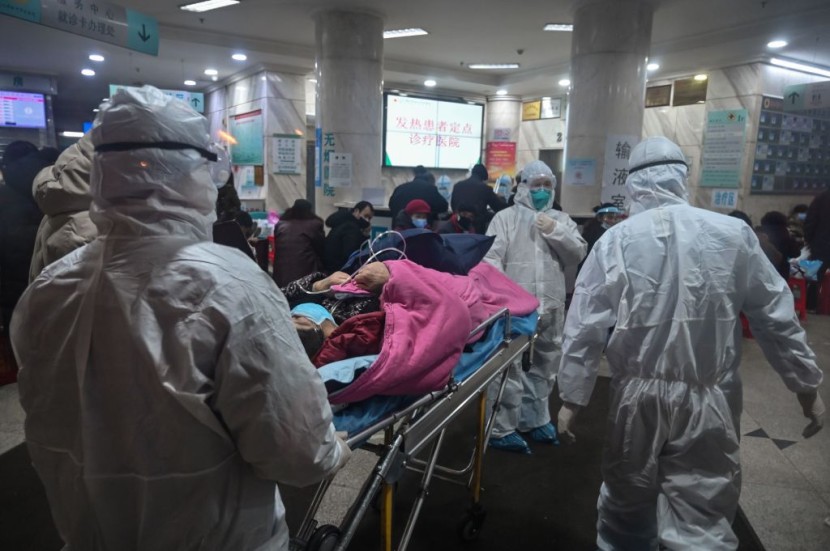
In his first public remarks on COVID-19 since Beijing dramatically loosened containment measures last month, Chinese President Xi Jinping urged officials on Monday to take precautions to protect lives.
China, which was largely sheltered from the virus for the majority of the pandemic, is now experiencing the world's largest increase in infections following the abrupt lifting of economic restrictions.
Xi Jinping Urges to 'Protect' Lives as China Fights COVID-19 Surge
Studies estimate that approximately one million people could die in the coming months. The influx of elderly patients who are not vaccinated is straining emergency medical facilities, while many members of the population struggle with medication shortages.
Meanwhile, mask-wearing Beijing and Shanghai commuters crowded subway trains on Monday, as China's two largest cities inched closer to living with COVID-19 and frontline medical personnel struggled to deal with millions of new infections.
President Xi Jinping abandoned China's zero-Covid policy of lockdowns and relentless testing on December 7 after three years of stringent anti-coronavirus restrictions in response to public protests and a spreading outbreak.
According to additional reports, emergency wards in small cities and towns southwest of Beijing are overwhelmed as China battles its first-ever national COVID-19 outbreak. Patients are slouched on benches in hospital corridors and lying on the floor due to a lack of beds. Emergency rooms are turning away ambulances, relatives of the sick are searching for open beds, and emergency rooms are refusing ambulances, Live Mint reported.
As a wave of Covid cases sweeps across China, the nation's economy is under severe strain. Since the second-largest economy in the world significantly loosened its COVID-19 restrictions earlier this month, there have been no reliable estimates of the virus' national spread.
However, multiple cities and provinces have reported tens of thousands of new cases per day. The fast development of the infection has compelled many individuals to remain indoors and empty stores and restaurants. In addition, factories and businesses are forced to shut down or reduce production as a result of an increase in sick workers.
China's economy was already struggling before Beijing abruptly abandoned its zero-Covid policy. In November, retail sales decreased due to widespread lockdowns, and unemployment reached its highest level in six months.
Recently, top leaders have signaled that they will return to focusing on growth next year and have placed their bets on the easing of pandemic restrictions to stimulate the economy, as per CNN.
Experts: China Can Avoid New COVID-19 Surge
According to a new study, as China abandons three years of zero-Covid restrictions aimed at eradicating the coronavirus, as many as 1.5 million people could die from COVID-19 over the next six months.
The study, which was published on the preprint service medRxiv on December 22 by researchers from the University of Macau and Harvard Medical School, if Chinese authorities implemented public health measures to slow the spread of Covid-19, increase vaccination rates, and ensure adequate supplies of medicines, the number of deaths could be reduced to less than 200,000.
Non-pharmaceutical interventions for public health include quarantine, maintaining social distancing, and wearing masks. Due in large part to these measures, China has maintained low infection rates over the past three years. According to a Johns Hopkins University calculator, the country has had one of the world's lowest death rates per capita.
As the highly transmissible Omicron variant dominated, however, China's zero-Covid strategy became untenable. In response to increasing pandemic outbreaks and nationwide protests against pandemic restrictions, authorities announced a policy reversal earlier this month. According to previous modeling studies, these modifications may cause an increase in Covid-related deaths.
The purpose of the new, non-peer-reviewed study was to evaluate the overall efficacy of China's prevention measures by developing an Omicron transmission model using pandemic data from Macau, Hong Kong, and Singapore in 2022.
In particular, the researchers wanted to evaluate the "flatten the curve" strategy, which consists of a variety of milder, non-pharmaceutical measures that can reduce infection rates. The objective is to prevent a surge in new cases so that the healthcare system does not become overburdened, according to South China Morning Post.
@YouTube
© 2026 HNGN, All rights reserved. Do not reproduce without permission.








